FG10 (T8) Graphs of sine and cosine functions
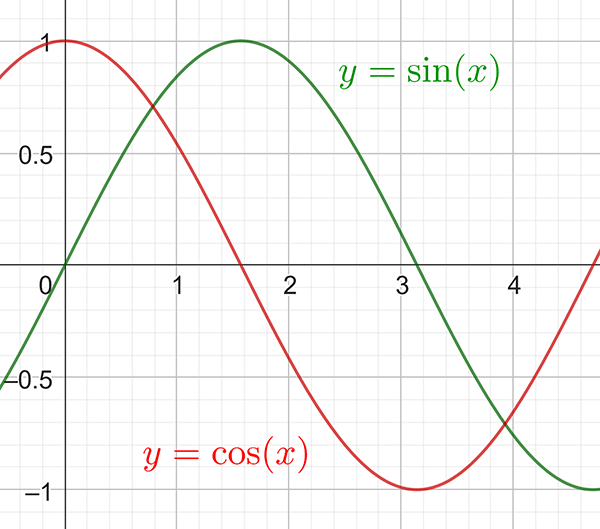
Both the functions y = sin x and y = cos x have a domain of R and a range of [-1,1]. The graphs of both functions have an amplitude of 1 and a period of 2π radians.
The functions \(y=\sin x\) and \(y=\cos x\) have a domain of \(\mathbb{R}\) and a range of \([-1,1]\).
The graphs of these functions are periodic graphs, that is, the shape of the graph repeats every set period.
The graphs of both functions have an amplitude of \(1\) and a period of \(2\pi\) radians (that is the graph repeats every \(2\pi\) units). They are shown below.
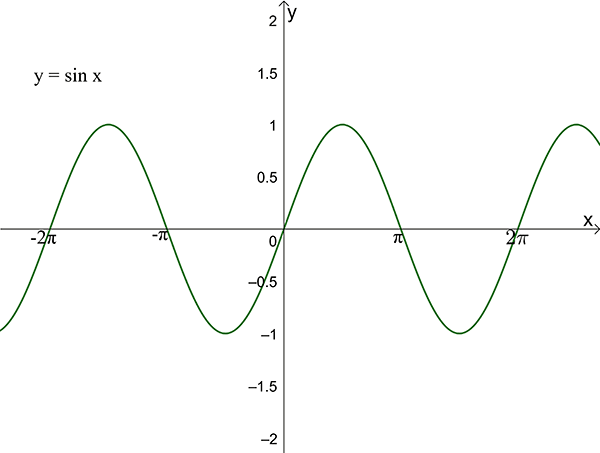
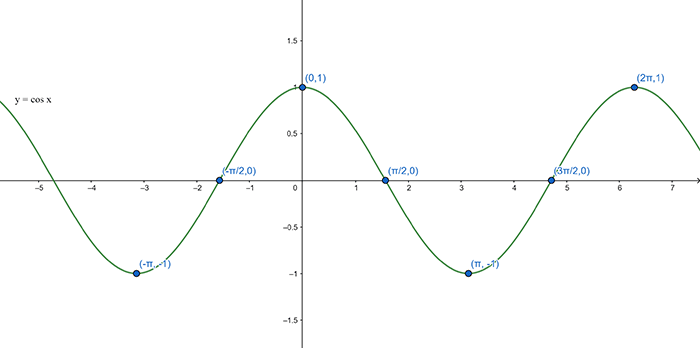
When looking at the graphs remember \(\pi\approx3.142,\) so \(2\pi\approx6.284\).
In this module we look at how the basic graphs may be transformed into graphs of more complex trigonometric functions.
Change of Amplitude and Period
The graphs of both \(y=a\sin nx\) and \(y=a\cos nx\) have an amplitude \(\left|a\right|\) and a period of \(\frac{2\pi}{n}\).
Examples
- Graph \(y=3\sin x\).

In this case, \(a=3\) and \(n=1\), therefore the graph has an amplitude of \(3\) and period of \(2\pi\).
- Graph \(y=3\cos2x\).
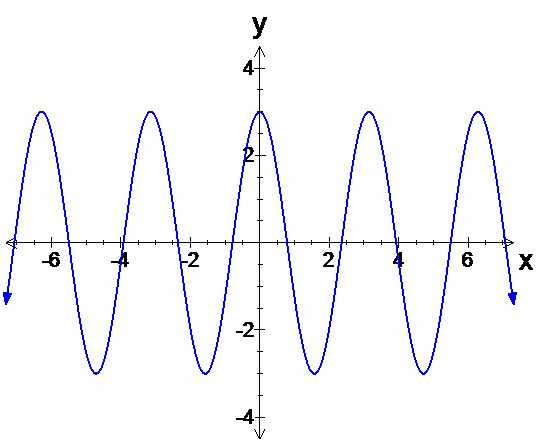
In this case, \(a=3\) and \(n=2\), therefore the graph has an amplitude of \(3\) and period of \(\frac{2\pi}{2}=\pi\).
Vertical translation
The graph of \(y=a\sin nx+k\) is the graph of \(y=a\sin nx\) translated up \(k\) units (or down \(k\) units if \(k\) is negative).
The graphs of \({\color{blue}y=\sin x+2}\) and \({\color{red}y=\sin x}\) are shown below.

Similarly, the graph of \(y=a\cos nx+k\) is the graph of \(y=a\cos nx\) translated up \(k\) units (or down \(k\) units if \(k\) is negative).
Horizontal Translation
Replacing the \(x\) with \(\left(x-\phi\right)\) shifts the graphs of \(y=\sin x\) and \(y=\cos x\) horizontally \(\phi\) units to the right.
Replacing the \(x\) with \(\left(x+\phi\right)\) shifts the graphs of \(y=\sin x\) and \(y=\cos x\) horizontally \(\phi\) units to the left.
Examples
- Graph \(y=\sin\left(x-\frac{\pi}{2}\right)\)
The graph of \(y=\sin\left(x-\frac{\pi}{2}\right)\) shown in blue, superimposed on the graph of \(y=\sin x,\) in dashed red is shown below.

- Graph \(y=\cos\left(x+\pi\right)\)
The graph of \(y=\cos\left(x+\pi\right)\), shown in blue, superimposed on the graph of \(y=\cos x\), in dashed red, is shown below.
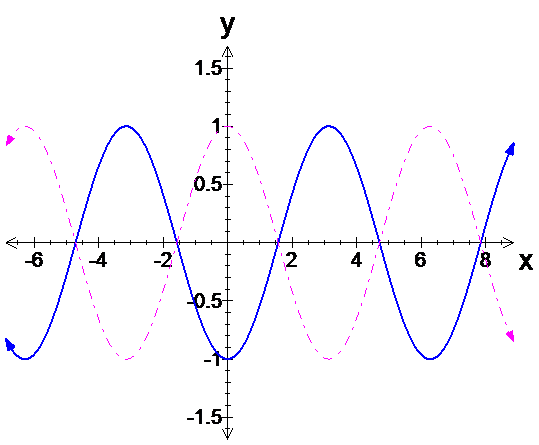
- Graph \(y=3\sin\left(4x-\pi\right)\)
1 First change \(y=3\sin\left(4x-\pi\right)\) to the form \(y=3\sin4\left(x-\frac{\pi}{4}\right)\) so that the horizontal translation of the graph is clear.
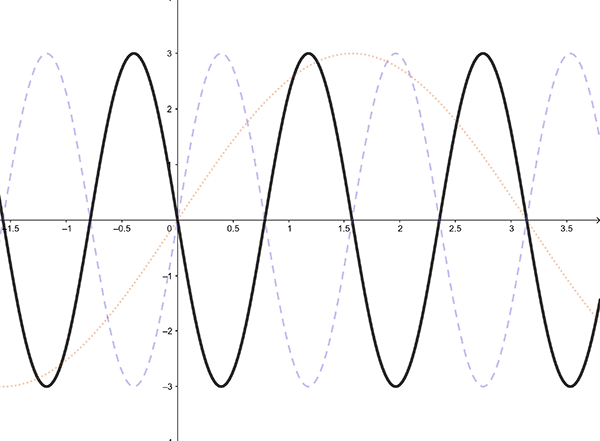
The graph of \(y=3\sin4\left(x-\frac{\pi}{4}\right)\) in black is superimposed on the graphs of \(y=3\sin x\) (dotted red) and \(y=3\sin4x\) (dashed grey).
Reflection
Changing the sign of \(a\) in the equations \(y=a\sin nx\) and \(y=a\cos nx\) results in reflection about the \(x\)-axis.
Example
Graph \(y=-3\cos2x\).
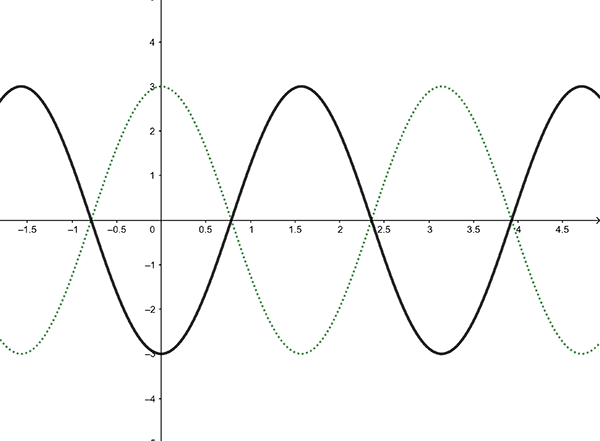
The graph of \(y=-3\cos2x\) (in black) superimposed on the graph of \(y=3\cos2x\) (dotted).
Exercise 1
1. Sketch the graphs of the following functions for one complete cycle stating the amplitude and the period.
(a)\(\,\) \(y=2\cos x\)
(b)\(\,\) \(y=2\sin3x\)
(c)\(\,\) \(y=\frac{1}{2}\sin2x\)
(d)\(\,\) \(y=3\cos\frac{x}{2}\)
(e)\(\,\) \(y=-2\sin3x\)
1(a)
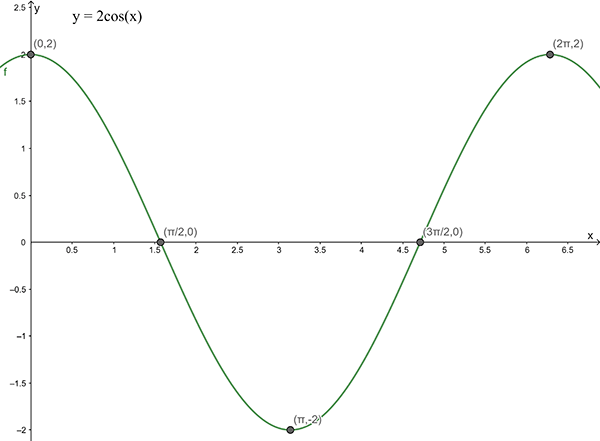
Amplitude = \(2\) , Period = \(2\pi\)
1(b)
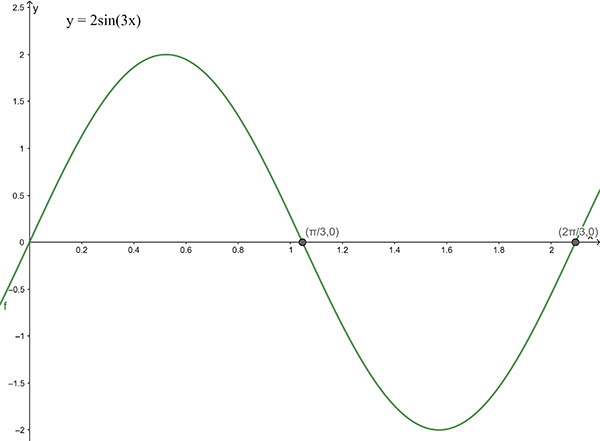
Amplitude = \(2\) , Period = \(\dfrac{2\pi}{3}\)
1(c)
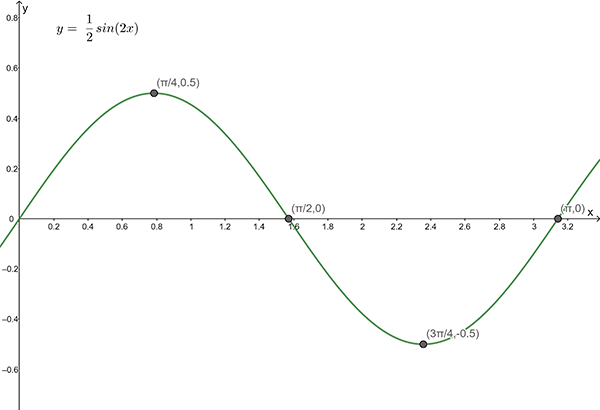
Amplitude = \(\dfrac{1}{2}\) , Period = \(\pi\)
1(d)
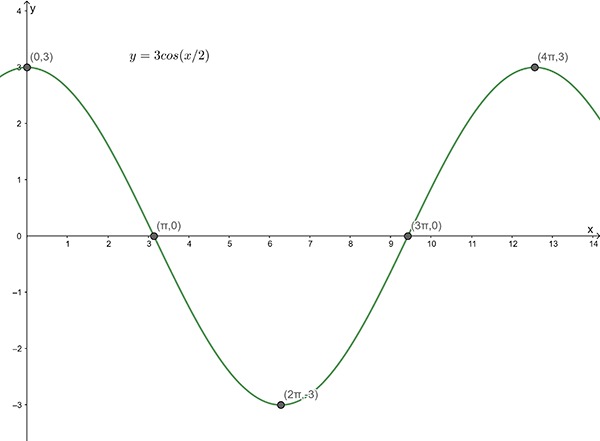
Amplitude = \(3\) , Period = \(4\) \(\pi\)
1(e)

Amplitude = \(2\) , Period = \(\dfrac{2\pi}{3}\)
Exercise 2
Sketch the graphs of the following functions for one complete cycle stating the amplitude and period.
\(y=2\sin\left(x-\pi\right)\)
\(y=3\cos\left(x+\frac{\pi}{2}\right)\)
2(a)
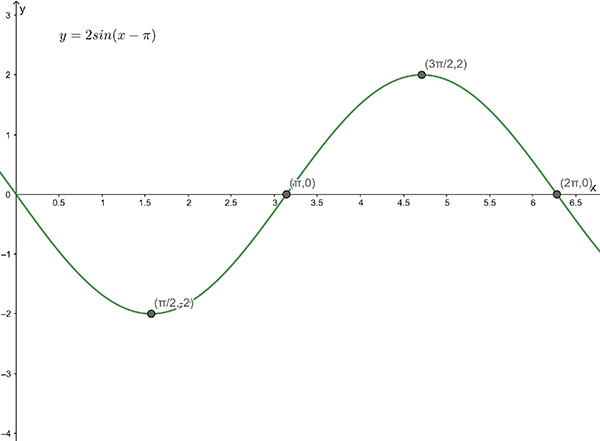
Amplitude = \(2\) , Period = \(2\pi\)
2(b)
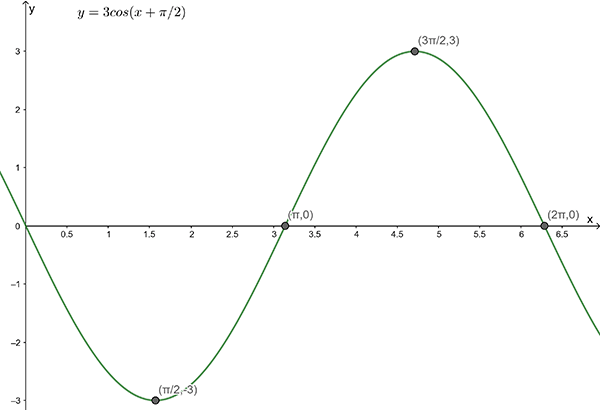
Amplitude = \(3\) , Period = \(2\pi\)
Exercise 3
Sketch the graphs of the following functions for one complete cycle stating the amplitude and period.
\(y=2\sin\left(3x-\pi\right)\)
\(y=3\cos\left(4x-2\pi\right)\)
\(y=2\sin\left(2x+\frac{\pi}{3}\right)\)
3(a)
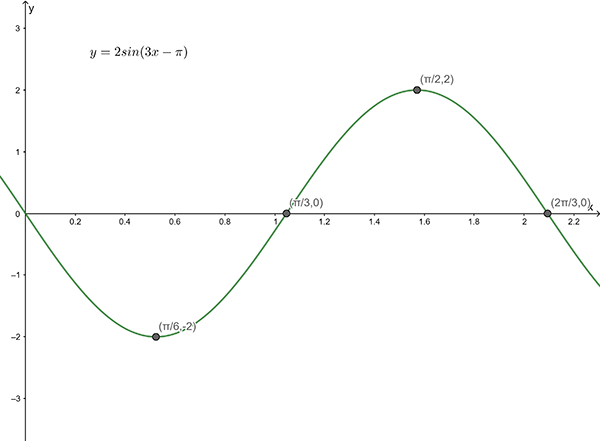
Amplitude = \(2\) , Period = \(\dfrac{2\pi}{3}\)
3(b)
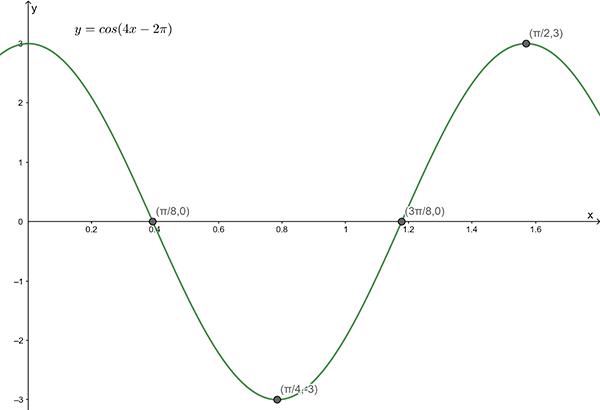
Amplitude = \(3\) , Period = \(\dfrac{\pi}{2}\)
3(c)
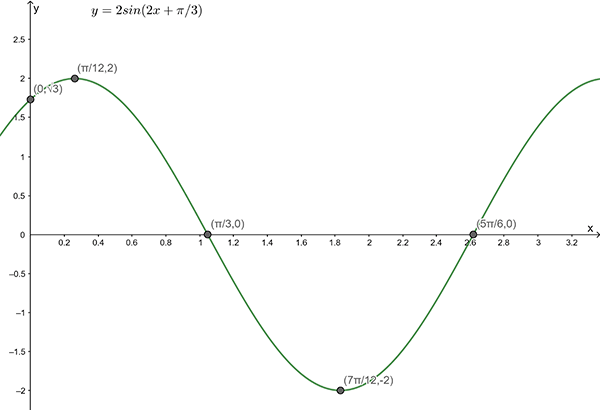
Amplitude = \(2\) , Period = \(\pi\)
Download this page, FG10 Graphs of Sine and Cosine Functions (PDF 2199KB)
What's next... T9 Trigonometric identities
